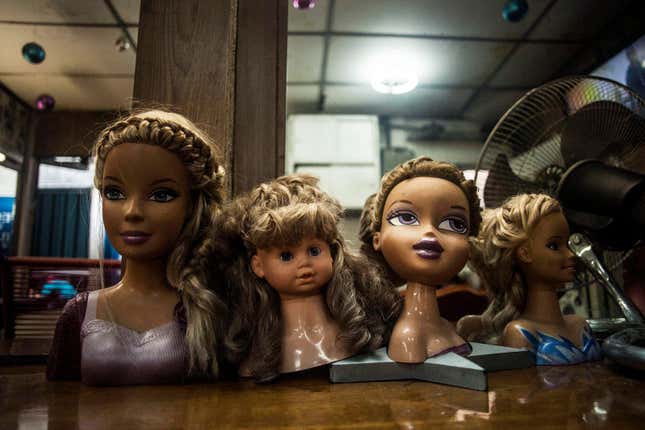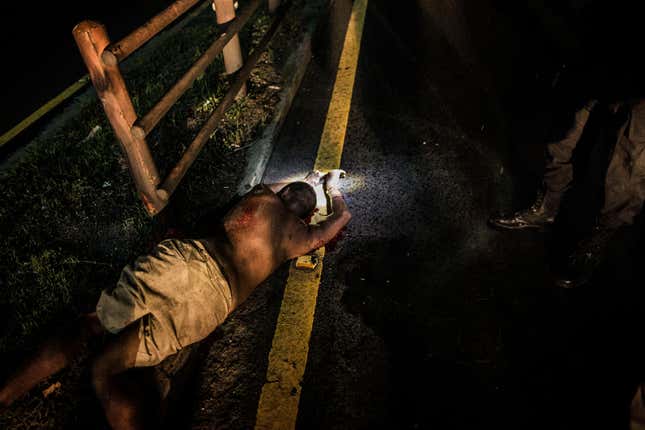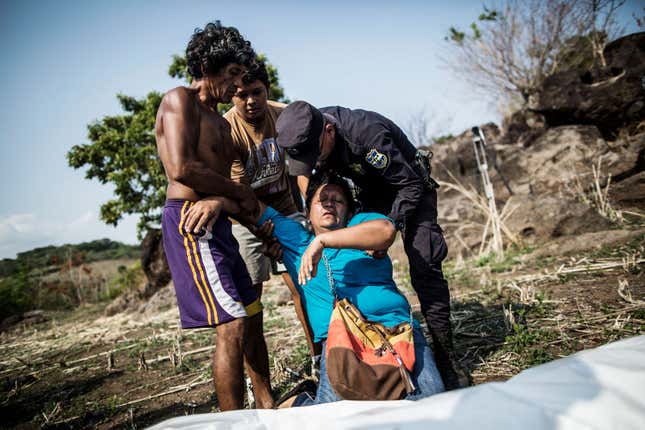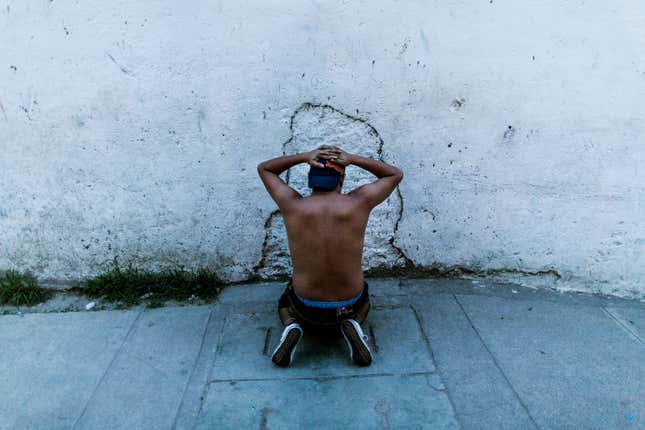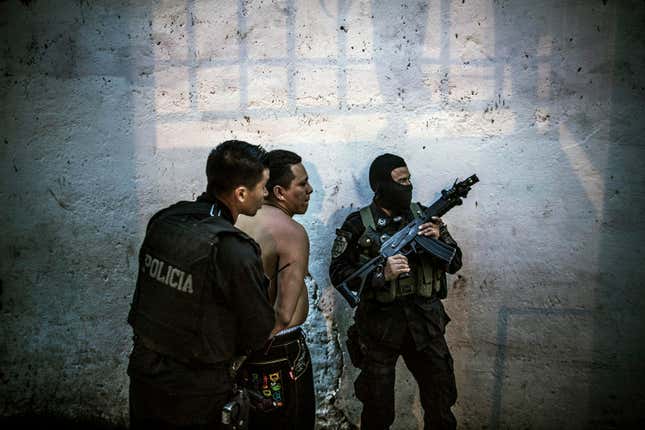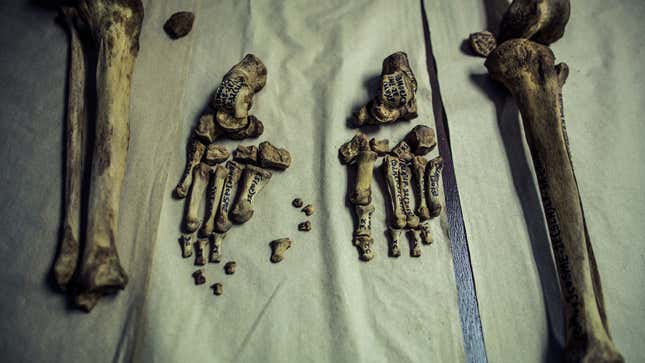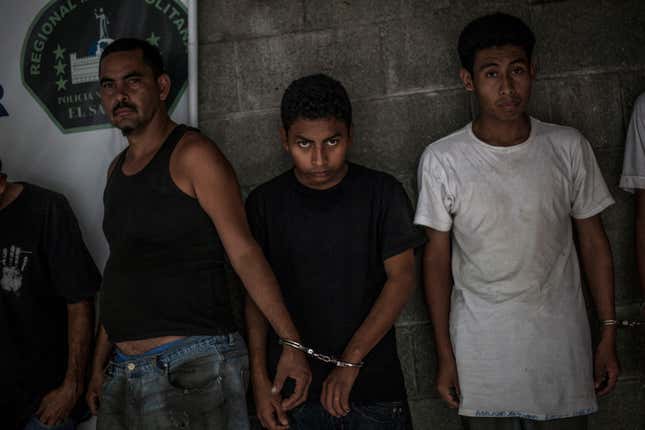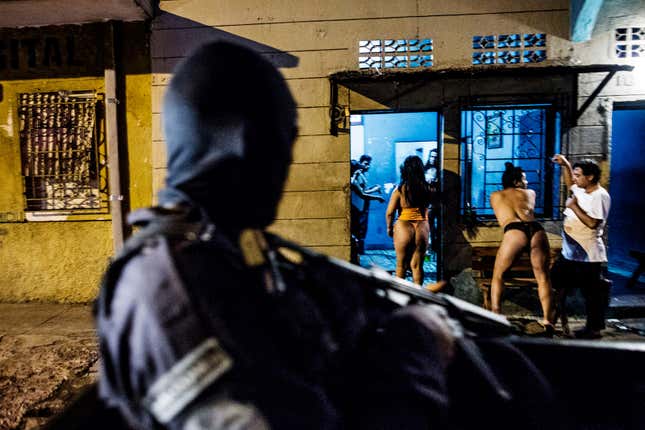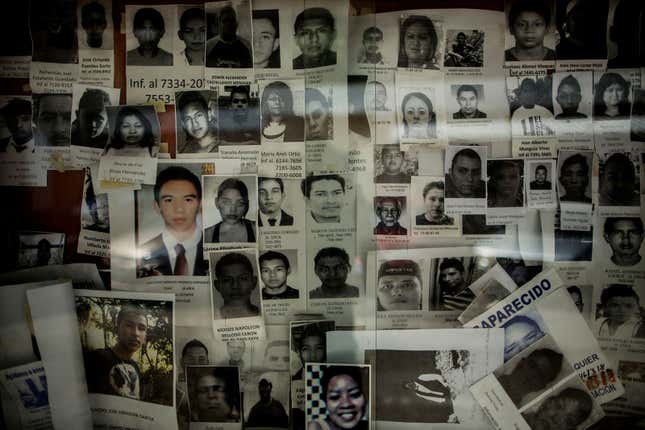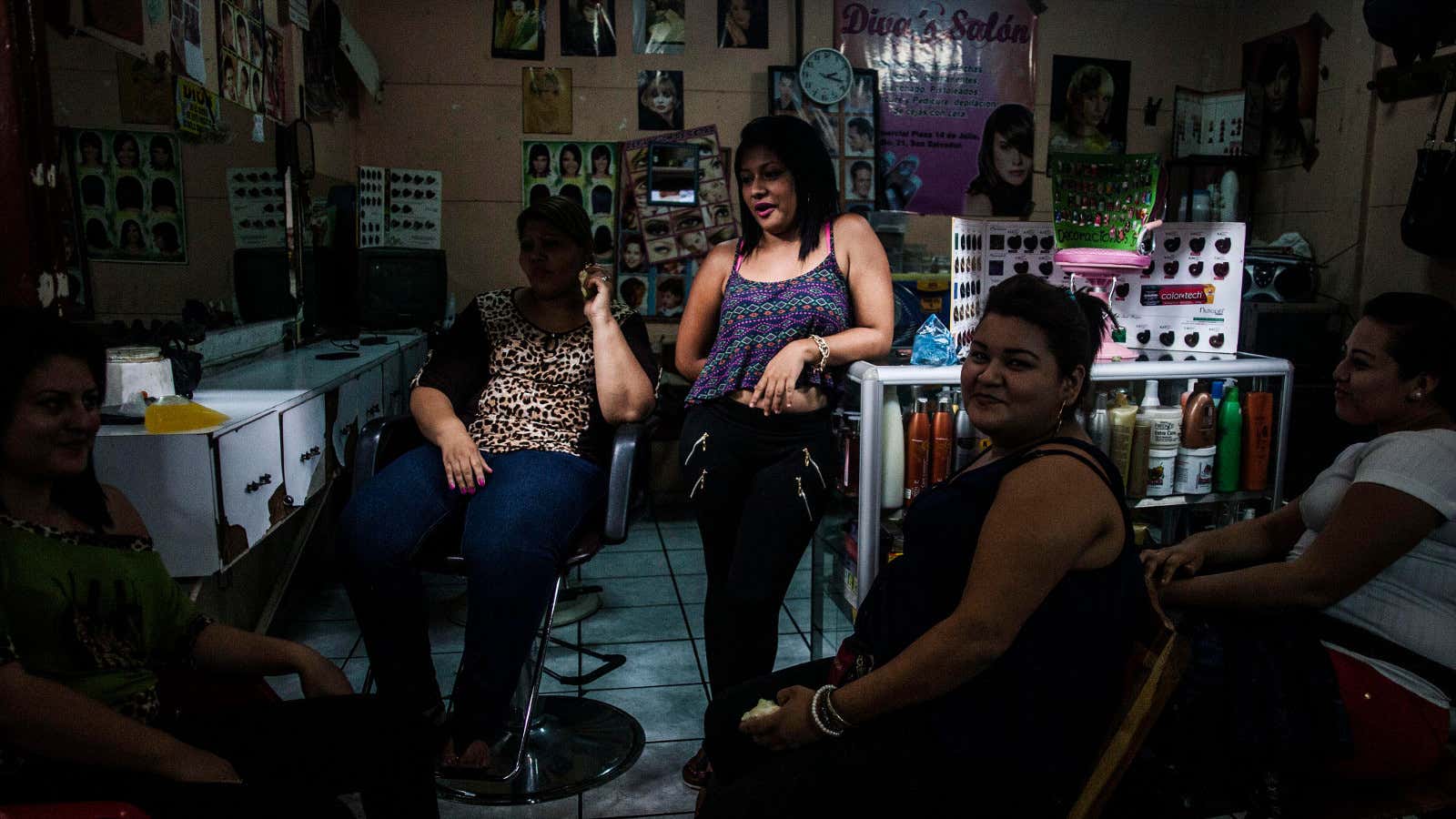The US issued a new travel warning this week to caution US citizens traveling to El Salvador, as the country endures one of its most violent periods since the end of the civil war in 1992. In May alone, 635 people were killed in the country, and the death toll for June may reach new heights: In the first ten days of the month, there were 240 homicides reported.
At this pace, El Salvador could soon surpass its neighbor Honduras as the most dangerous peace-time country in the world.
The violence, which is mainly gang-driven, is captured in a graphic reportage by Pulitzer-winning photographer Manu Brabo published this week by the Associate Press. One poignant sign of the problems facing the country (depicted in the photo above of Salvadorian women in a salon with black hair) is a rumor spread on the streets and through social media that only girlfriends of gang members are now allowed to have blonde or red hair, according to AP correspondent Alberto Arce. Local media have reported similar sentiments in the capital (link in Spanish), as gangs dispute control over some areas like Las Margaritas, and as far as Honduras (link in Spanish), where Salvadorian gangs are also present.
Both the police and the gangs have released statements denying the rumor, but many women, too scared to take the risk, have dyed their hair to avoid confrontation. Maria Jose Estrada, a resident of San Salvador who dyed her blonde hair dark, told the AP in a story published on June 22: “You don’t wait for clarifications,” and, “These people are crazy and they will kill you.”
What’s driving the surge in crime dates back to 2012, when the country’s dominant “maras” or gangs, Mara Salvatrucha (nicknamed MS-13) and Barrio 18 (18th Neighborhood), agreed to pedal back the violence in exchange lighter prison conditions for their leaders, which included privileges to communicate with other gang members from prison.
The truce came to an end last year under a new government, which scrapped the prison concessions and vowed to crack down on gang-related crime (which spans from murder to extortion, kidnapping, and drug distribution) by creating police special units to patrol the streets.
Below, a compilation of Brabo’s photos depicting the gravity of everyday life under these pressures.
